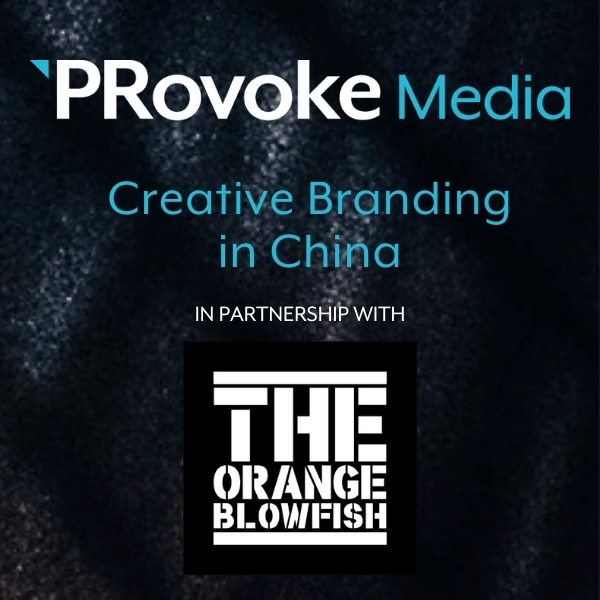The Orangeblowfish 25 May 2021 // 6:12PM GMT

China, is now forecast to become the world’s biggest economy, overtaking the US in 2028, according to a recent report in the BBC. Having said this, its commercial hub, Shanghai, has already become the preferred commercial hub for many Western businesses, with the city having the sixth largest concentration of billionaires.
Shanghai is unlike any other city in China. Its modern outlook with familiar brands from back home coupled with the surrounding of many affluent Chinese who speak proficient, if not, native English, can cause short-term travellers to have a false impression about how little Western brands need to adapt in order to be successful in the Middle Kingdom.
Shanghai does not represent the whole of China. However, if you have been booked for a business trip to China — in pre-Covid times of course — it would have most likely been to Shanghai, where many Western businesses have their China commercial headquarters.
Visitors, very quickly after arriving, will notice that in Shanghai there’s a Starbucks on every street: it’s a great example of how a global tier-one brand that has been hugely successful in China, continues to adapt to the needs of the local consumer.
Assumptions are easily cast thinking that Chinese prefer local brands because of 'nationalism' — however, local brands, simply address three values better
They have very successfully created on-going demand for coffee shops in a culture that was traditionally tea drinking. But for every Starbucks there are brands on their second, third, even fourth wave of relaunch in China. Still trying to get it right, but without taking the time to figure out what might be different about consumers in a country with completely different cultural traditions.
British Born Chinese, Siu Tang (pictured, left) moved to Shanghai in 2008, to set up the China office for the corporate company he was previously working for. Within four years, he left his corporate job to establish The Orangeblowfish, as he saw many missed opportunities resulting from international brands not understanding how to adapt their global DNA to a very different local culture.
With Siu as creative director and his business partner, Natalie Lowe (pictured, right) as managing partner, the pair have grown The Orangeblowfish into a full-service creative agency, with its headquarters in Shanghai, and teams in the United Kingdom and Australia. Their mission is to educate and counsel clients on how to navigate the complexities of the China market and to get their clients talked about. How do they do this? By leveraging creativity using storytelling, art, space and technology.
“Global brands often struggle to localise their global brand strategy and assets that resonate with the Chinese audience,” Siu Tang, founder and creative director commented. “We’ve seen this challenge across brands from a wide range of industries. This issue is that headquarters of some global brands may not necessarily understand what Chinese consumers want, and therefore do not know what needs to be addressed, and how,” Tang added. Assumptions are easily cast by those who don’t understand China, thinking that Chinese prefer local brands because of “nationalism.” However, local brands, simply address three values better: quality, value for money and after-sales service.
Let’s take Yuesai for example. Yuesai, the first modern cosmetic brand in China, was acquired by L'Oréal Group in 2004. Founded in 1992 by Yue-Sai Kan, an Emmy-winning TV host, socialite and entrepreneur, Yuesai was created on the basic belief that Chinese women can create their own choices, make their own destiny and be beautiful in their own way; beliefs that resonate with many Chinese women even up to today and for generations to come.
Yuesai's brand USP integrates traditional Chinese medicine and modern science to create the best beauty products for Chinese women at different stages of womanhood. “Chinese women are constantly in search of high-quality luxury but not exclusively foreign brands. There is a surge of interest and appreciation for brands — especially local Chinese brands — that takes pride of Chinese heritage and can integrate them successfully in a modern and relevant way to today’s China,” Gail Lee, general manager of Yuesai Cosmetics said. “The Yuesai brand is a reputable luxury brand that Chinese consumers know about. Our mission is to continue to evolve to ensure we’re meeting the needs and desires of the modern generation of Chinese women.”
Shanghai's modern outlook can cause short-term travellers to have a false impression about how little Western brands need to adapt in order to be successful
Another common problem international brands face is the mistake of translating their global message, without considering local nuances. “One too many times we’ve been approached by headquarters of brands, who try to save costs by asking us [in China] to leverage global marketing assets. For example, promotional videos that feature foreigners in environments that don’t relate to China. On top of this, the asset is presented (either spoken or written) in a foreign language with Chinese sub-titles. This simply won’t work,” Natalie Lowe, managing partner for The Orangeblowfish added.
To be successful brands need to see their identities through the eyes of their target Chinese consumer and hire a local partner to develop campaigns that use local consumer insight. By doing this, the local team can put the right creative spin on the brand, so it gets through to the Chinese consumer in the right way. If you think about it: China is a diverse market with 23 provinces, 4 major cities (Beijing, Shanghai, Guangzhou, Shenzhen), 15 new first tier cites, 56 ethnic groups and seven major dialects. Therefore, when thinking about entering China, think about which region and province to kick off your brand project. “Rome wasn’t built in a day. Streamline, focus, start small, see the results, then aim a little bit higher,” says Lowe.
But sometimes there are more fundamental challenges for a brand to address. For example, the offer may not meet the needs of consumers in this fast-moving market. Since the 1980s, China’s economy has seen significant growth. Despite 2020 being a pandemic, China’s economy grew 2.3%, and was the only global economy who reported positive annual growth. This rapid level of growth has created an open, aspirational but demanding consumer. Consumers have everything at their fingertips: from receiving deliveries within 24 hours of ordering on Taobao, to receiving coffee, groceries and meals within 30 minutes, and even transferring and receiving money as well as paying for items with the click of a button or facial recognition using Alibaba or WeChat. In a nutshell, businesses are integrating the fastest technology that make purchasing and payment extremely convenient. Therefore, the expectations of people in China have become faster, more integrated, and slick.
“Global brands have got to be open and need to know how to truly create their brand for the China market in the broadest sense,” Tang added. Homegrown brands are increasingly popping up — sophisticated, confident, and naturally relevant to the subtleties of Chinese tastes. “To be successful in China, it’s important that consumers live and breathe your brand. There is a strong emphasis on the application of the brand – brands need to create and sell the brand experience – so that it resonates with the local target audience, and they are wanting to post it on their social moments. The brand experience at times will be more important than the creative and design itself,” Tang concludes.
About The Orangeblowfish
The Orangeblowfish is an award-winning creative agency with teams across China, Australia and the United Kingdom. We unleash the power of creativity by leveraging storytelling, art, space and technology to get our clients' brands talked about. Our client portfolio includes Fortune 500 companies and start-ups across industries such as F&B, luxury, hotel, fashion and beauty, retail, corporate/B2B. We produce uniquely crafted creative branding strategies, customized brand installations, brand experiences, digital marketing campaigns and more. For more information, visit www.theorangeblowfish.com.


































.jpg)












